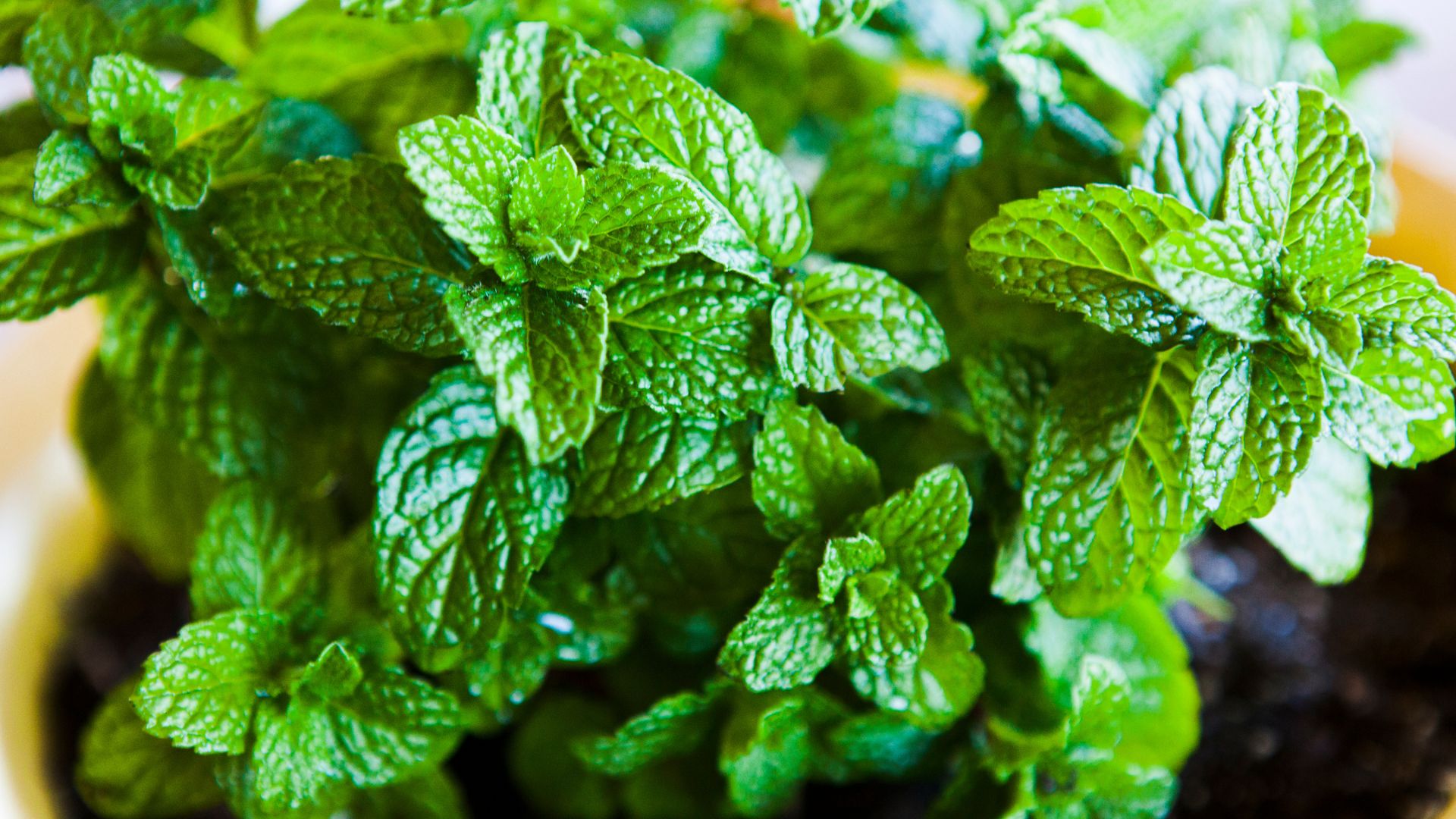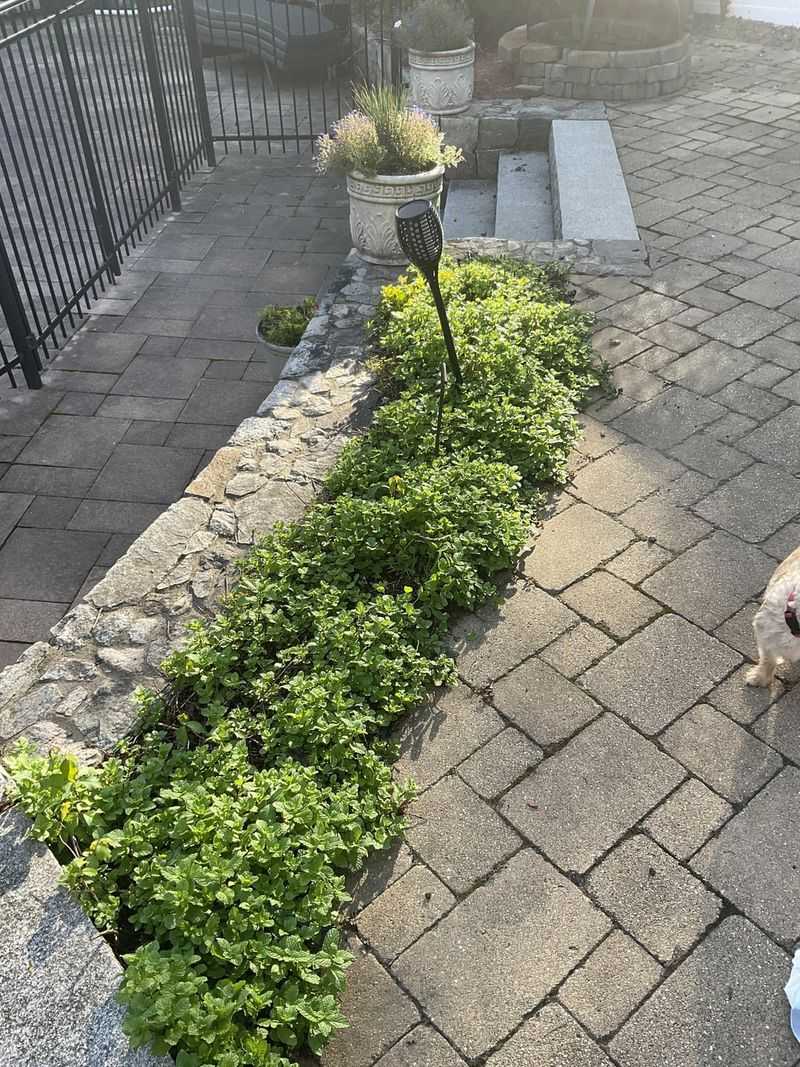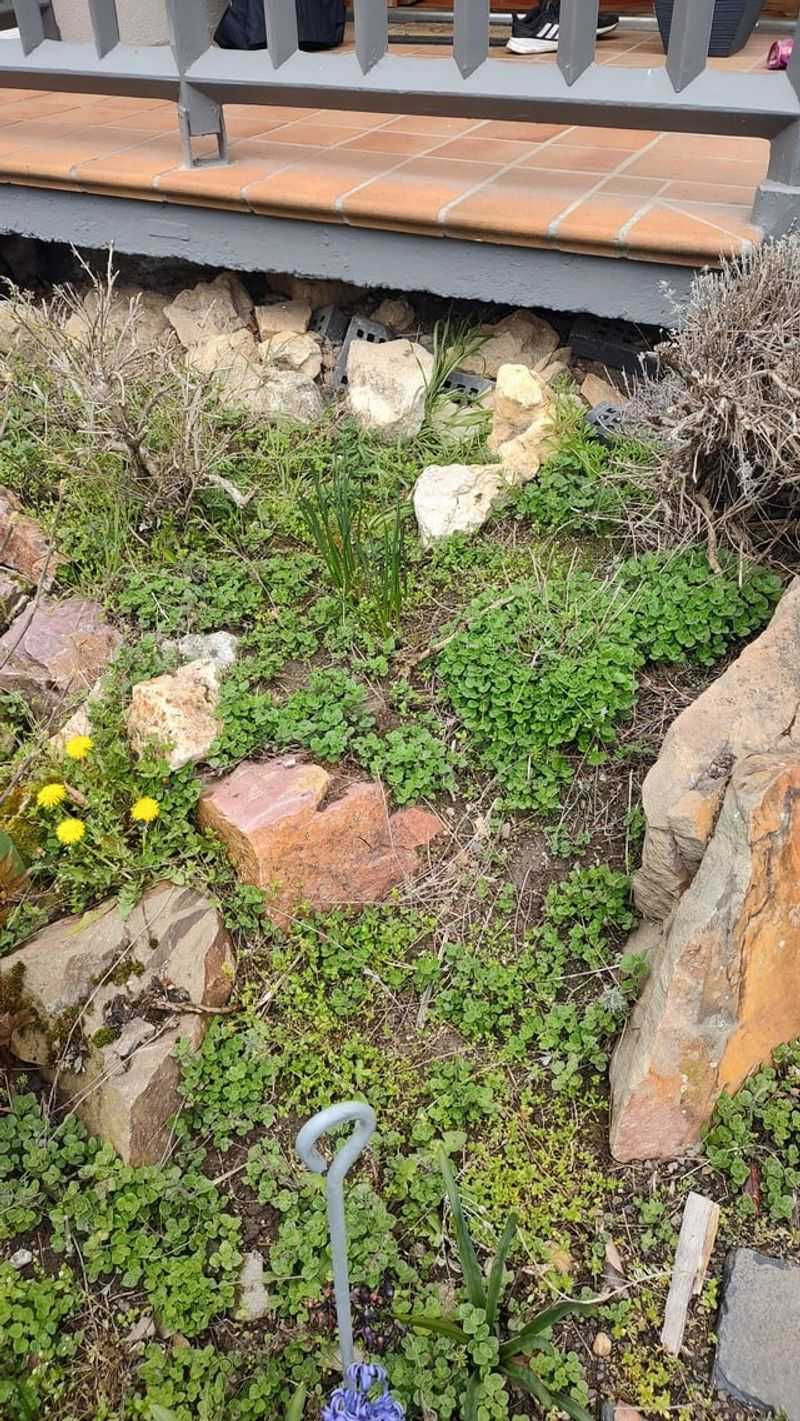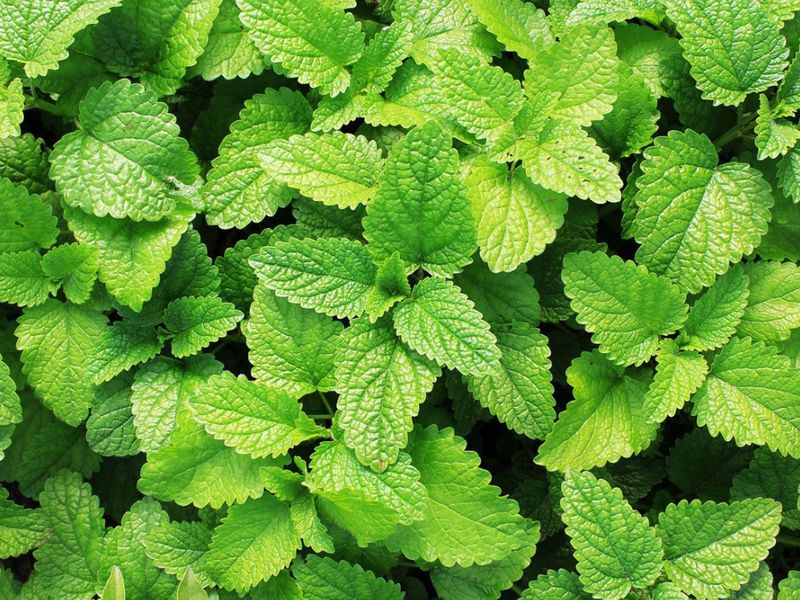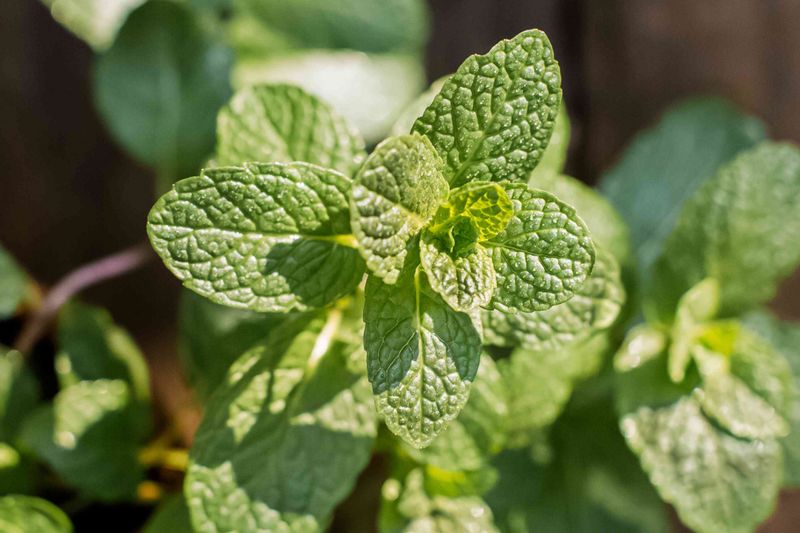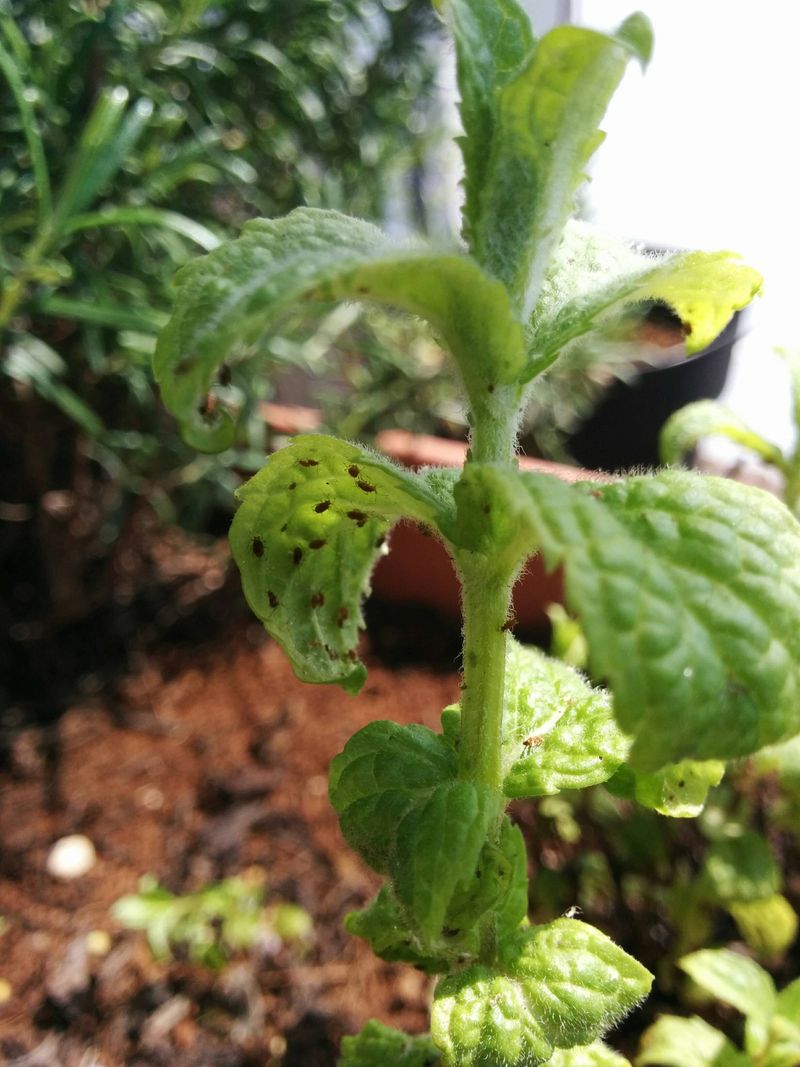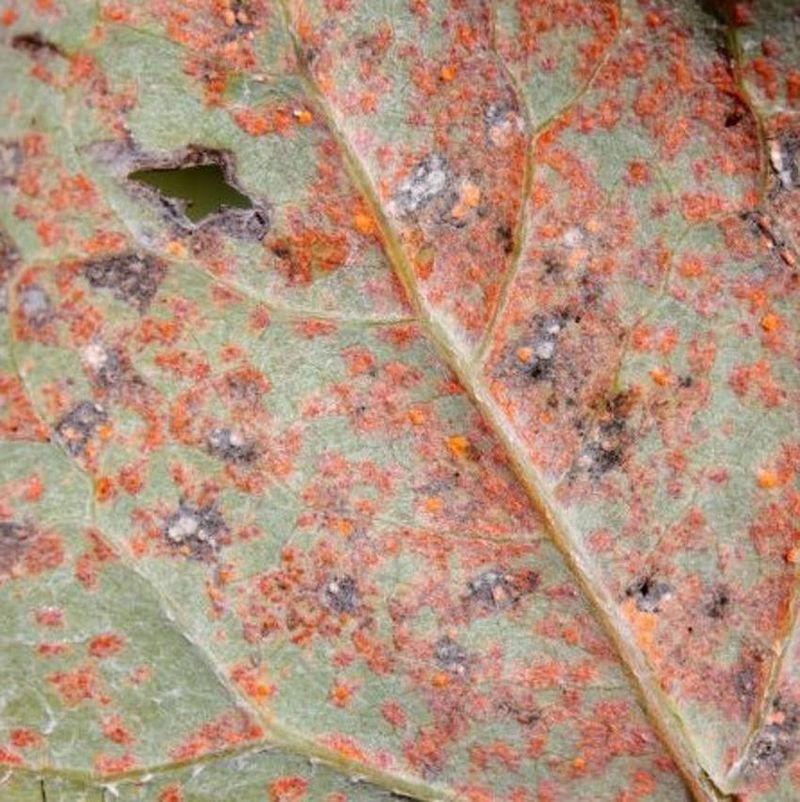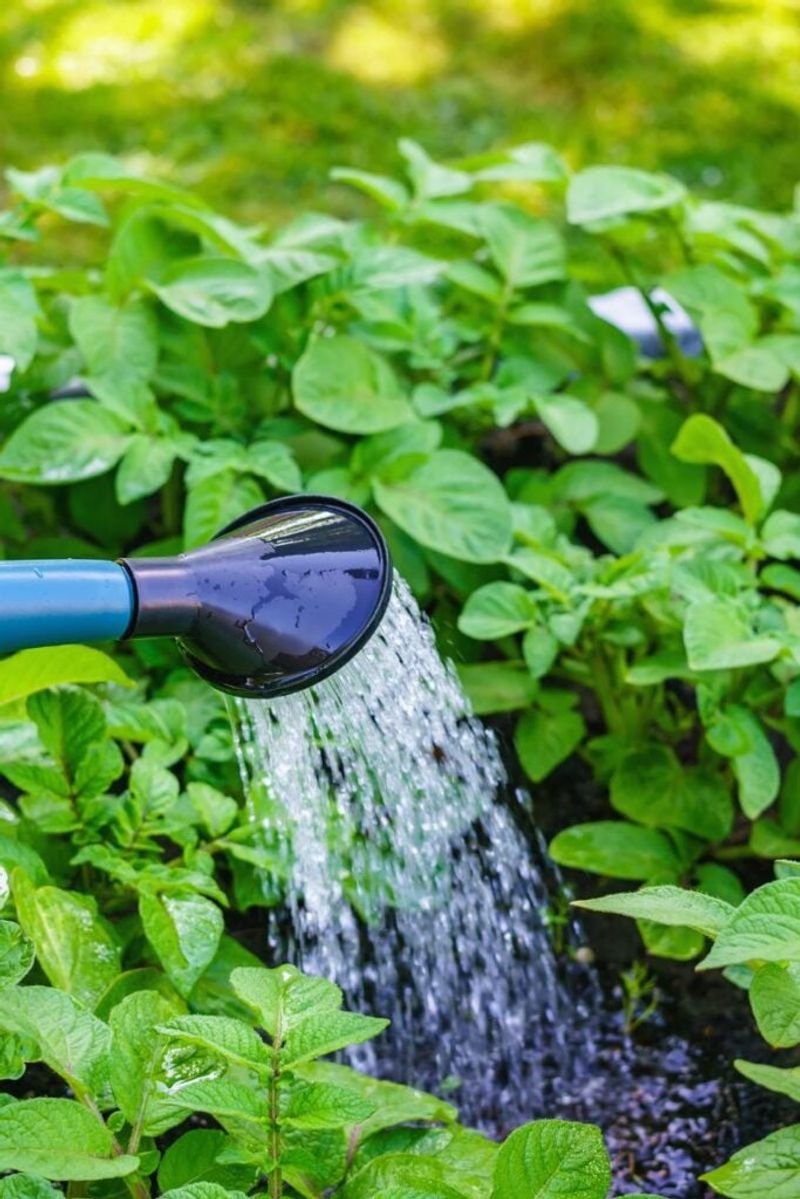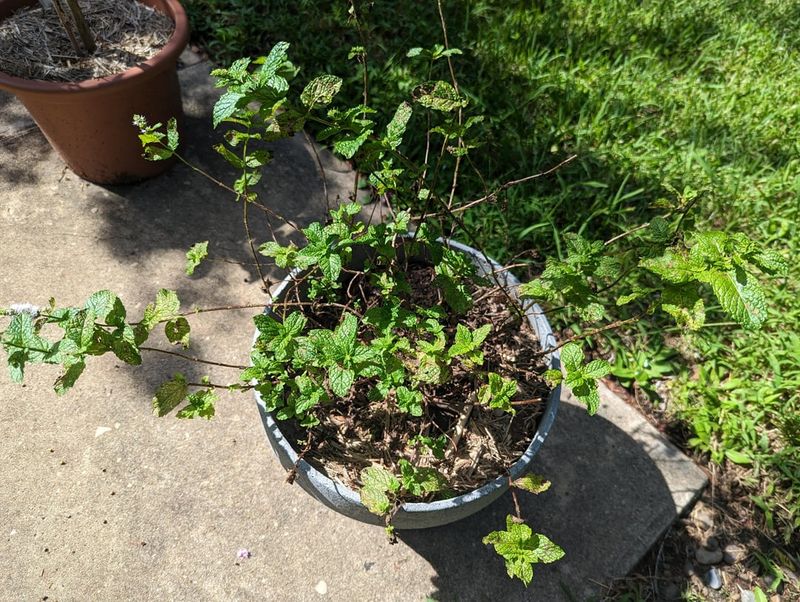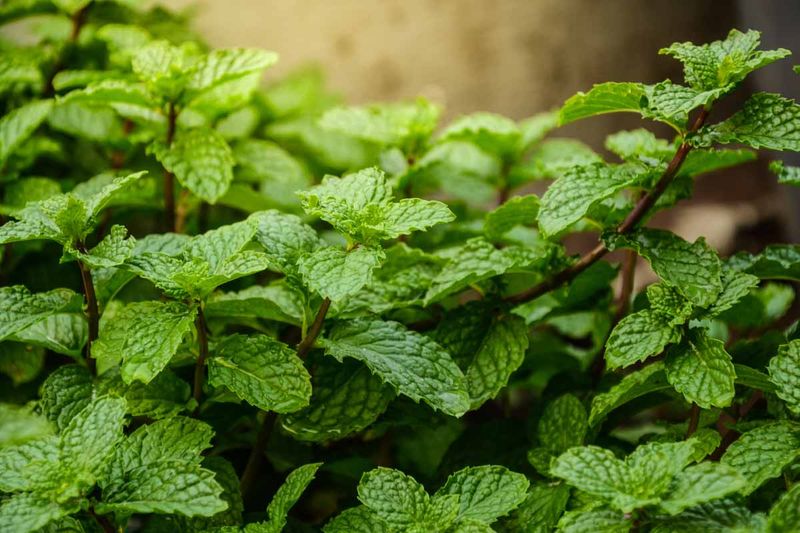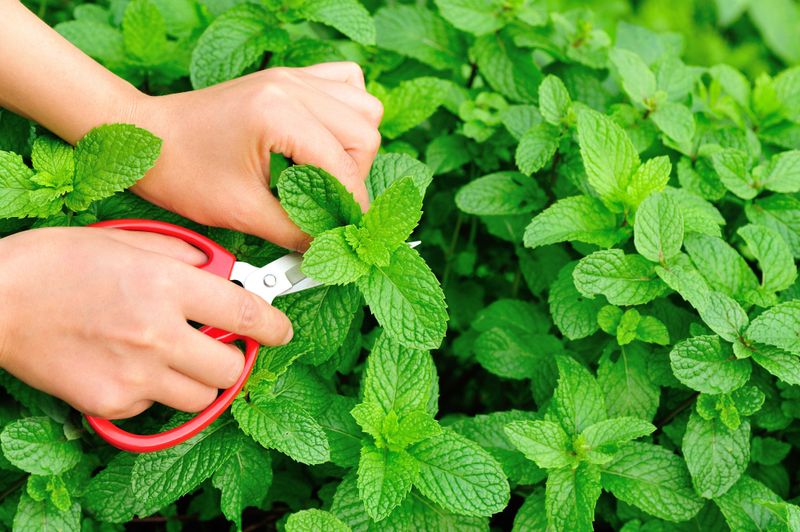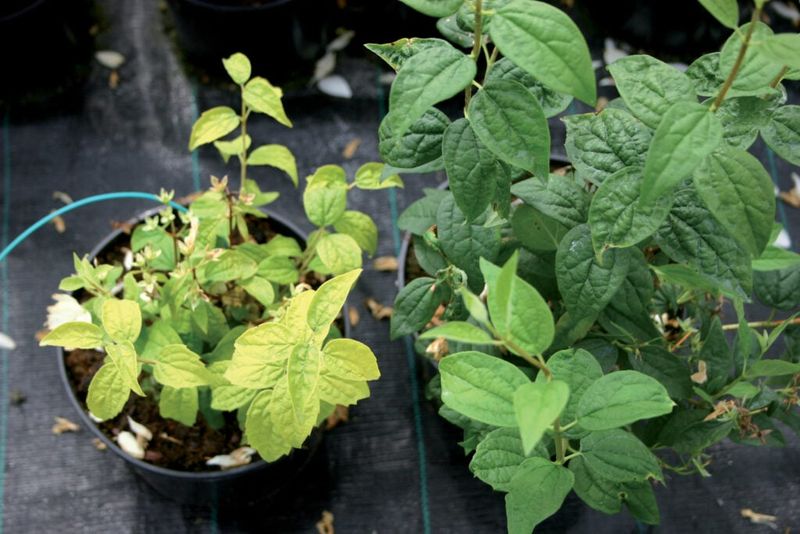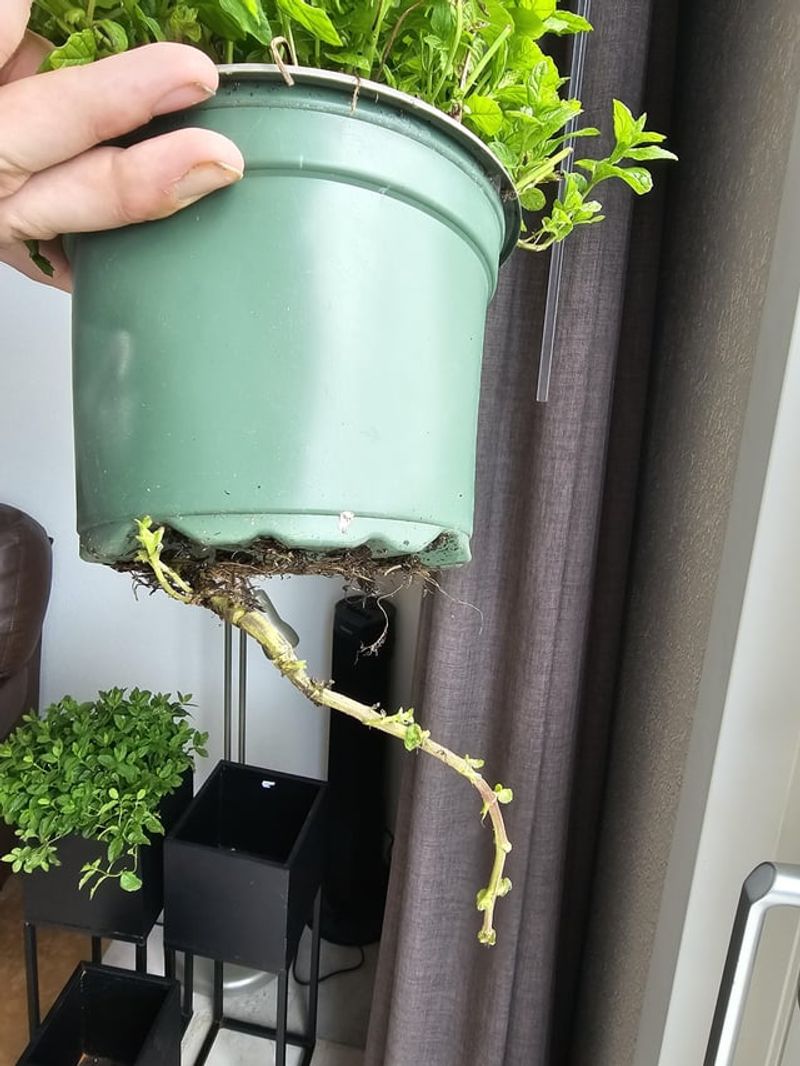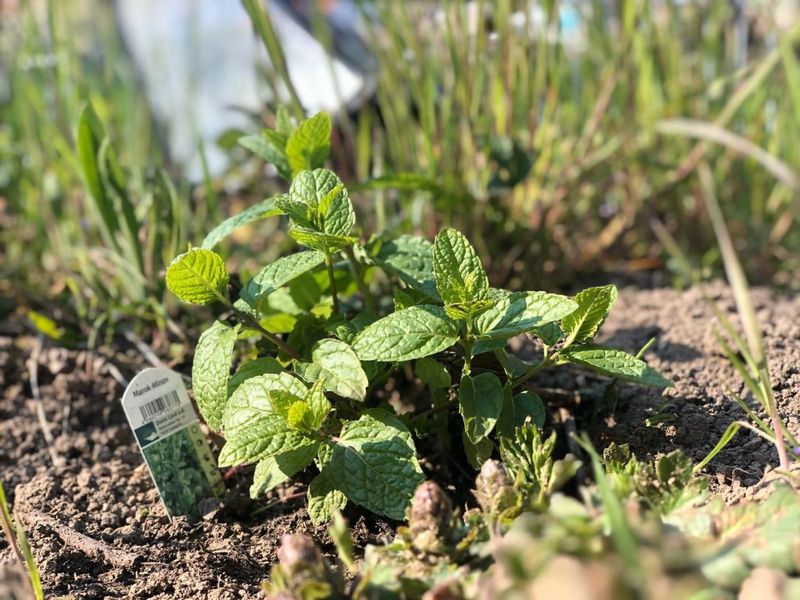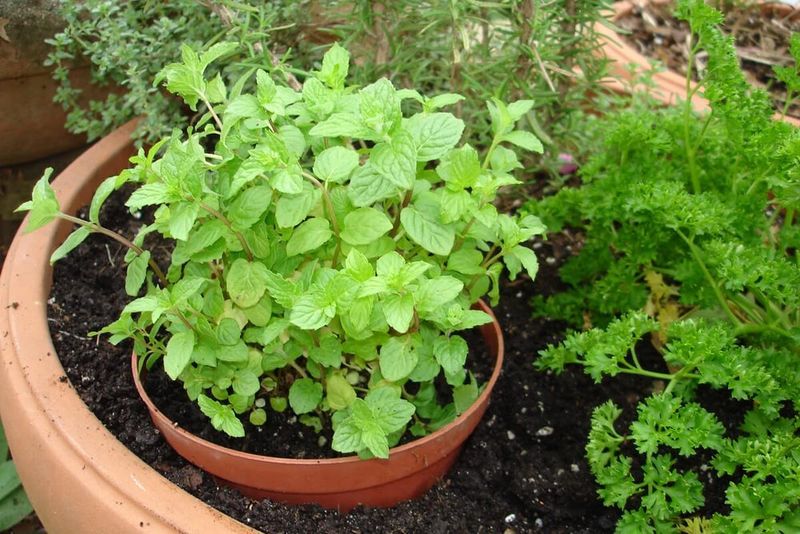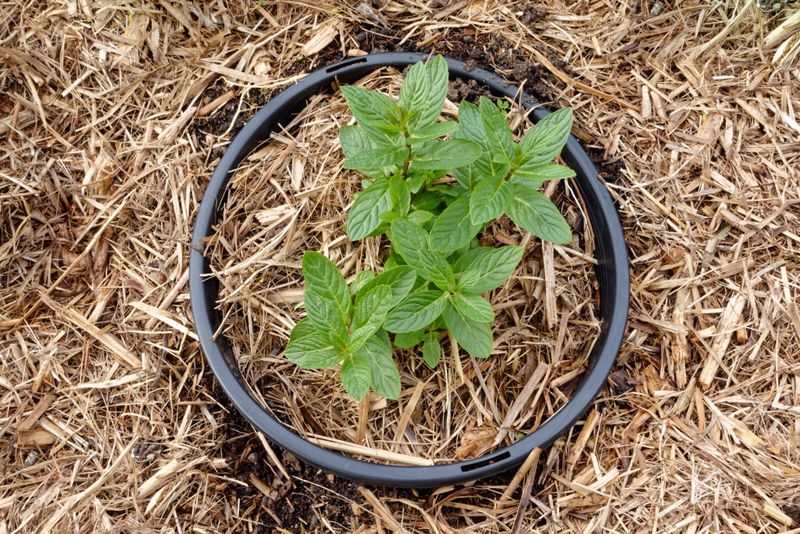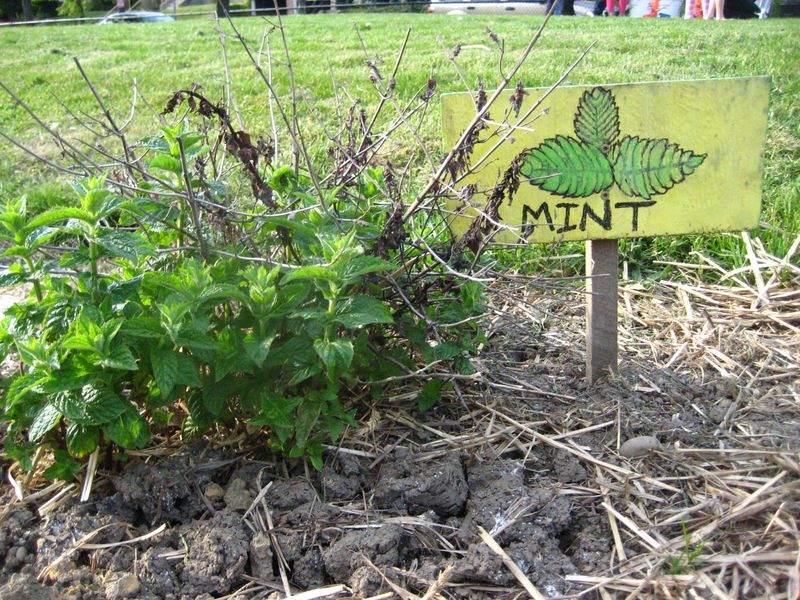Mint is one of those herbs that seems like a no-brainer to grow—it’s fragrant, easy to use in the kitchen, and smells amazing when you brush past it. I remember planting just a tiny sprig, thinking I was being clever. Fast forward a few weeks, and it was everywhere.
What no one warned me about is how mint doesn’t just grow—it spreads, fast and furiously. It snakes its way into every corner, crowding out other plants and popping up where you least expect it. It’s basically the party guest that never leaves.
If you’re thinking about adding mint to your garden, it’s totally doable—but with a little planning. I’ll share how to keep it contained, enjoy its perks, and avoid the mint invasion I definitely didn’t see coming.
1. Aggressive Spreading Habits
Mint spreads through underground runners called stolons that can travel several feet from the mother plant. I once planted a small sprig in my herb garden, and within three months, it had sent shoots popping up in my vegetable bed six feet away!
These runners grow rapidly and can penetrate small spaces between garden borders, pavers, and even concrete cracks. Left unchecked, a single mint plant can colonize an entire garden bed in just one growing season.
2. Difficult To Remove Completely
Once mint establishes itself, complete removal becomes nearly impossible. The smallest fragment of root left behind will regenerate into a new plant. I’ve dug up mint beds three times in a single summer, only to find it returning with renewed vigor each time.
Even herbicides struggle to eliminate mint permanently because of its waxy leaves and resilient root system. Some gardeners resort to covering areas with black plastic for a full season to finally kill persistent mint patches.
3. Crowds Out Other Plants
Mint grows densely and competes aggressively for water, nutrients, and sunlight. Its rapid growth habit allows it to tower over and shade smaller plants, effectively strangling neighboring herbs and flowers.
In my garden, mint quickly overwhelmed my thyme and oregano before I realized what was happening. The thick mat of mint foliage also creates ideal hiding spots for slugs and snails, which can then attack your other plants. Companion planting becomes nearly impossible with unchecked mint.
4. Weakens When Neglected
Ironically, despite its invasive tendencies, mint can become leggy and weak if not properly maintained. Without regular harvesting, older stems become woody and produce fewer of the flavorful oils that make mint valuable.
Last summer, I forgot to trim back my spearmint for a few weeks, and the stems grew tall and spindly with small, less aromatic leaves.
Regular pruning is necessary to maintain a compact, bushy plant with the best flavor and scent. Neglected mint also flowers quickly, reducing leaf production.
5. Attracts Pest Insects
While mint repels some garden pests, it unfortunately attracts others. Mint’s strong scent draws spider mites, aphids, and flea beetles – all of which can damage the plant and spread to nearby crops.
I’ve battled whiteflies on my mint for years, and they invariably migrate to my tomatoes next. The dense foliage provides perfect shelter for these pests to multiply.
Mint also attracts beneficial insects, but the pest population can quickly outpace the predators in many gardens.
6. Susceptible To Rust Disease
Mint is particularly vulnerable to mint rust, a fungal disease that appears as orange-brown pustules on the undersides of leaves. Once established, this disease is difficult to control and can quickly spread throughout your mint patch.
My peppermint developed rust after a particularly rainy spring, and despite removing infected leaves, the disease persisted.
Rust weakens plants, reduces yield, and makes leaves unusable for culinary purposes. High humidity and overhead watering increase the risk of this frustrating disease.
7. High Water Requirements
Mint demands consistent moisture to thrive and produce the aromatic oils that give it its characteristic scent and flavor. During hot summer months, mint needs watering several times weekly, making it impractical for water-conscious gardens.
In my drought-prone region, keeping mint happy required significantly more irrigation than my Mediterranean herbs.
When water is restricted, mint quickly becomes stressed, turning bitter and less productive. This thirstiness makes mint a poor choice for xeriscaping or low-maintenance garden designs.
8. Seasonal Dieback Issues
Despite its reputation for hardiness, mint often suffers significant dieback in winter or during extreme heat. In colder zones, mint disappears completely underground, leaving bare patches in the garden for months.
Last winter, my entire mint patch looked completely dead by January. While it eventually resprouted in spring, this seasonal disappearance creates unattractive bare spots in year-round gardens.
The dieback also provides opportunities for weeds to establish in the temporarily vacant space.
9. Crosses Between Varieties
Different mint varieties planted near each other will cross-pollinate, often resulting in hybrid offspring with unpredictable flavors. My carefully selected chocolate mint eventually lost its distinctive taste after flowering near spearmint.
These hybrids rarely maintain the special characteristics that make specialty mints desirable. Peppermint, spearmint, apple mint, and other varieties all lose their unique qualities when allowed to cross. The only way to prevent this genetic dilution is to keep different mint types far apart or remove flower heads before pollination.
10. Short Harvest Window
Mint’s peak flavor occurs just before flowering, creating a relatively brief harvest window for optimal taste. Once the plant begins producing flower buds, the leaves become more bitter and less aromatic.
I’ve found that my mint’s best flavor lasts only about 4-6 weeks each season. After flowering, even with cutbacks, the new growth never seems to match the spring flavor quality.
For serious culinary gardeners, this short prime harvest period can be frustrating compared to longer-season herbs.
11. Soil Nutrient Depletion
Mint’s aggressive growth habit rapidly depletes soil nutrients, particularly nitrogen. The dense root system efficiently extracts available nutrients, leaving little for other plants and eventually affecting the mint’s own health.
After three years in the same spot, my mint patch showed yellowing leaves and stunted growth until I amended the soil. Without regular fertilization, mint will exhaust even rich garden soil.
This nutrient hunger makes mint a poor neighbor in mixed herb gardens where it outcompetes less aggressive plants for limited resources.
12. Container Escape Artist
Even when grown in containers, mint finds ways to escape. It sends runners over the pot’s edge or through drainage holes, establishing new plants wherever they touch soil. My containerized peppermint once escaped through a crack and invaded a nearby strawberry patch!
Mint can also become severely rootbound in pots, requiring frequent division to maintain plant health. The dense root mass quickly fills containers, restricting water penetration and nutrient availability.
Without vigilant monitoring, container-grown mint still manages to become a garden menace.
13. Allelopathic Properties
Mint releases chemicals from its roots that inhibit the germination and growth of other plants – a phenomenon called allelopathy. These natural plant toxins help mint dominate garden spaces by suppressing competition from neighboring plants.
I noticed my lettuce seedlings struggled when planted where mint had previously grown. This allelopathic effect can persist in soil even after mint is removed, affecting subsequent plantings.
For vegetable gardeners, this hidden chemical warfare makes mint problematic even beyond its physical spreading habits.
14. Container Growing Solution
Growing mint in bottomless containers sunk into the ground creates an effective barrier against spreading. I use old plastic pots with the bottoms removed, buried so the rim sits 1-2 inches above soil level, preventing runners from escaping over the top.
This method allows mint roots to access deeper soil moisture while containing their spread. Last year, my sunken pot of orange mint stayed perfectly contained despite its vigorous growth.
For added security, choose thick-walled containers that won’t crack from root pressure or freeze-thaw cycles.
15. Root Barrier Installation
Installing commercial root barriers around mint plantings effectively halts underground spreading. I’ve successfully used 24-inch deep HDPE barriers, creating a 3-foot diameter circle around my mint patch that has contained it for years.
The key is ensuring the barrier extends several inches above soil level to prevent runners from crossing over the top. Metal flashing, pond liner, or specialized root barrier products all work well.
This method allows mint to grow naturally in the ground while protecting the rest of your garden from invasion.
16. Strategic Placement Planning
The simplest control method is strategic placement – locating mint where its spreading habit becomes an asset rather than a problem. I’ve planted mint along my driveway edge, allowing it to battle with the lawn rather than my vegetable garden.
Other good locations include confined areas like between a sidewalk and house foundation, or in spots where ground cover is desired. Some gardeners dedicate an entire raised bed solely to mint varieties.
By giving mint space to roam where its behavior won’t cause problems, you can enjoy its benefits without constant management.

